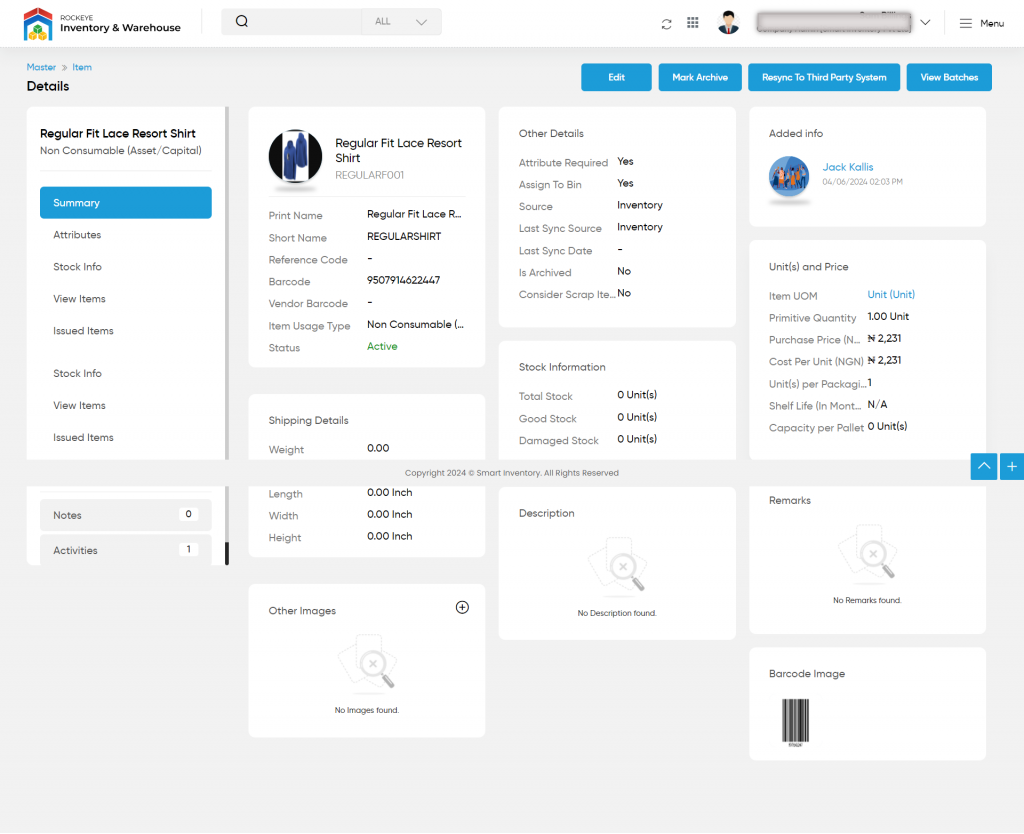Item
Purposes
The main purpose of this module is to enable the user to view and manage the items on the system.
Navigation Path
Path: Masters > Items Mgmt. > Item

Listing Screen
The user can view a list of all items that have been previously added. The user has the option to add, update, or archive items. A filter option is available on the list to search and sort items efficiently. The user can switch between three different listing views by clicking the “Change View” button.
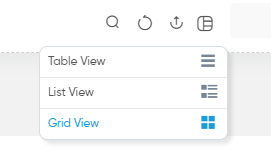
Table View
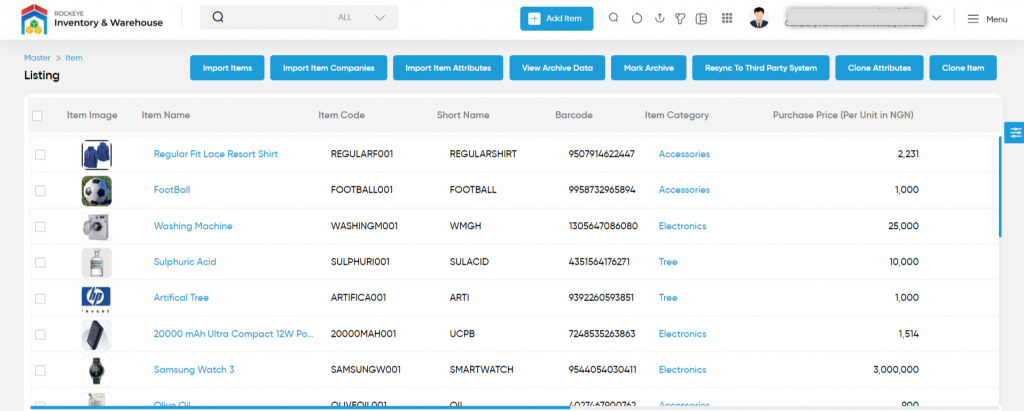
List View
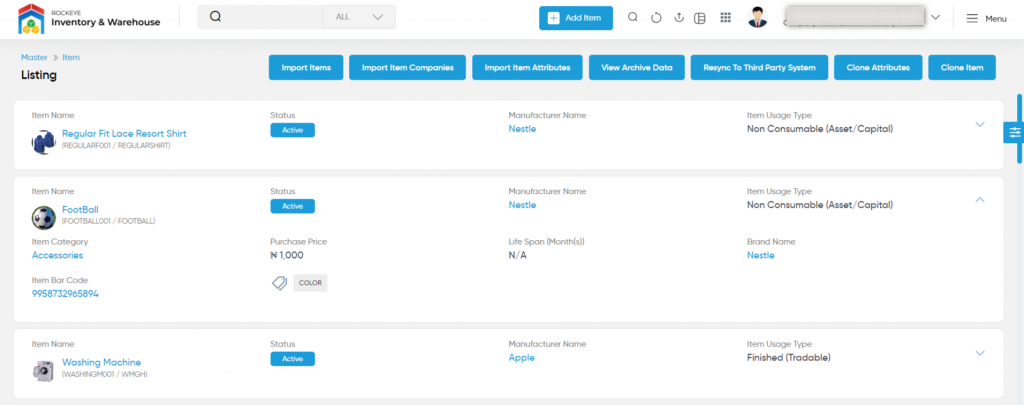
Grid View
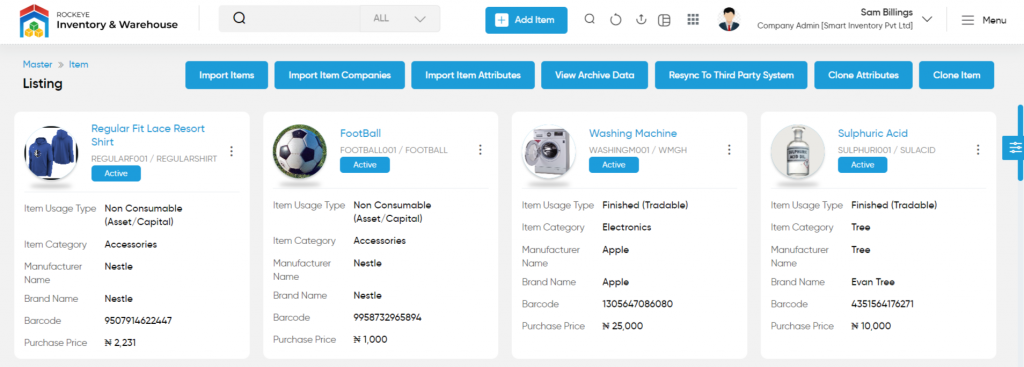
Mark the Items Archive

- Users will have the option to Archive the Items from the list.
- The user needs to select the Items from the listing to archive the Items.
Import Items

- On clicking the Import Items Button, user will be able to import the Items. Help for uploading the item data will be displayed here.
View the Archived Items

On clicking the View Archive Data button, the user will be able to view all the Archived Item’s information.
Add Items: To add an item, click on the below button

Add Item
- User will be able to add the items from this page
- The user needs to fill in the item’s information to add the items to the system.
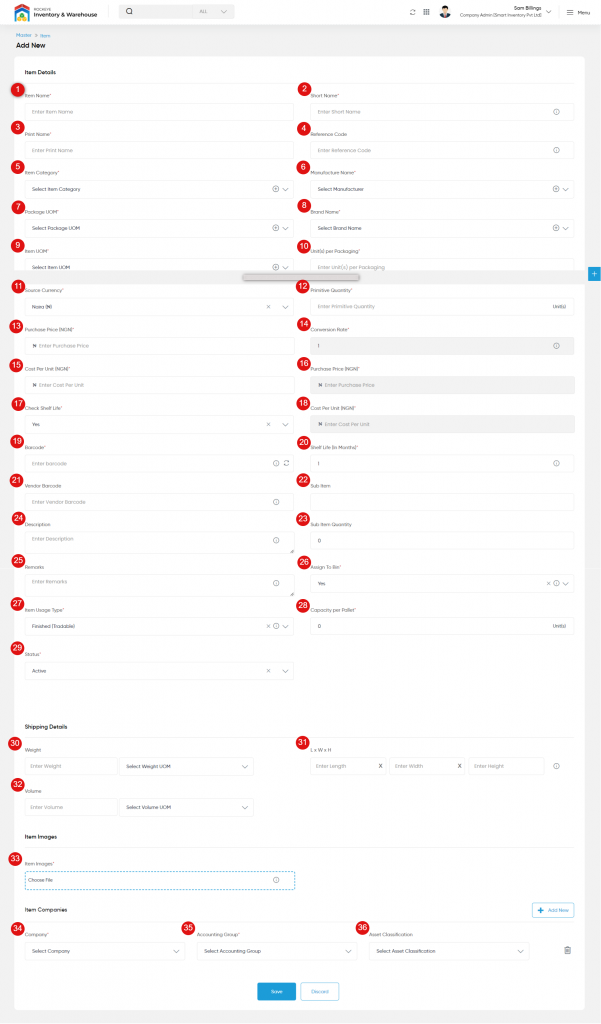
Fields available in the Add/Edit Item Form
Item Details:
- Item Name(Required): This is for specifying the name of the Item.
- Short Name (Required): Specify the short name of the item. (Note: Please keep this code to sync with other platforms)
- Print Name(Required): This is for specifying the print name of the Item.
- Reference Code: Specify the reference code of the item.
- Item Category (Required): Select the Item Category from the drop-down list. If users want to add a new Item Category for the item, by clicking on the “+” option user will be able to add it.
- Manufacturer(Required): This is for specifying the manufacturer of the item.
- Package UOM (Required): This is for specifying the package type for the Items. Select the Package Type from the drop-down list. For example, if the item is Grease then select its package name as bottle or container. By clicking on the provided “+” option, the user will be able to add a new record.
- Brand Name(Required): Select a brand name for the item from the drop-down.
- Item UOM (Required): Select a Unit for the item from the Dropdown. For example, if the item is Grease then select the unit as Gram (or), Kilo Gram.
By clicking on the “+” icon provided, a pop-up will be displayed as below. In that pop-up, Admin will be able to Add a New Record for that respective field.
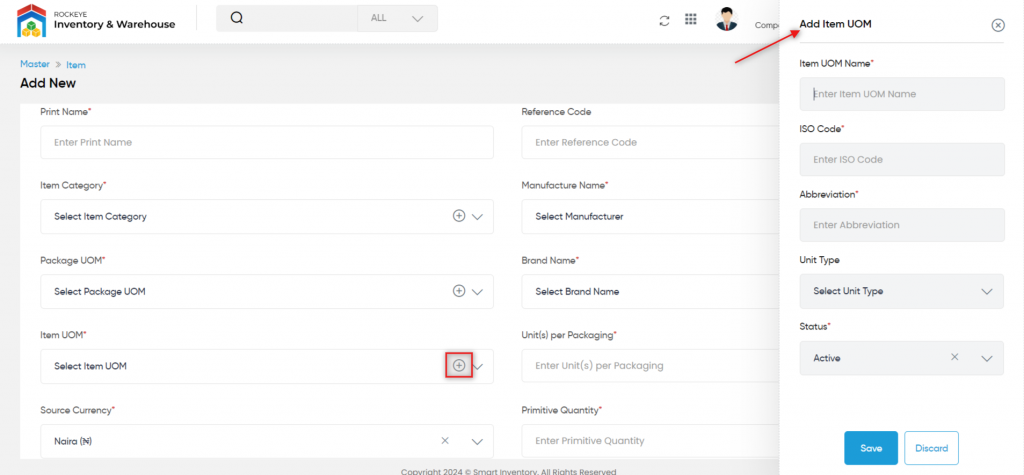
10. Unit(s) per Packaging (Required): Specify the unit per packaging of the item.
11. Source Currency (Required): Choose the source currency of the item.
12. Primitive Quantity (Required): Specify the primitive quantity of the item, that refers to the most basic or fundamental unit of measure for the item. For example, if the item is a product sold in kilograms, the primitive quantity might be one kilogram. If it’s a countable item like screws, the primitive quantity might be one screw.
13. Purchase Price (NGN) (Required): This is for specifying the Purchase Price of the item.
14. Conversion Rate (Required): Specify the conversion rate of the item.
15. Cost Per Unit (NGN) (Required): his field is for specifying the cost of each unit of items.
16. Purchase Price (NGN) (Required): This is for specifying the Purchase Price of the item.
17. Check Shelf Life (Required): Set the Shelf life(validity is applicable for the item, or not) for using the dropdown list.
18. Barcode (Required): Enter the Bar-code for the item if any. For example, “7007039172588”.The user can also generate a random barcode by clicking on the generate icon provided along the text field.
19. Shelf Life (In Months) (Required): This is for specifying item validity. For example, if the item is valid for 12 months then enter “12” here. (Note: This field is required if the “Check Shelf Life” is selected as “Yes”).
20. Vendor Barcode: Enter the vendor Bar-code if any.
21. Sub Item: Select a Sub-item of the item from the drop-down, if any.
22. Description: This is for specifying the Description for the item if any.
23. Sub Item Quantity: Specify the qty of the subitem.
24. Remarks: Specify the remarks if any.
25. Assign To Bin (Required): This is for selecting the option that the Bin assignment is possible for the item (or) not. Select an option from the drop-down. If bin assignment is possible then it should be Yes or No.
26. Capacity per Pallet (Required): Specify the maximum amount of weight or volume that a pallet can safely hold.
27. Status (Required): This field is to specify the status of the item as Active or Inactive.
28. Weight: This is for specifying the weight of the item. (For example, if the item is a lubricant in liquid form and contains 1 Liter in 1 unit, then enter 1L here. Similarly, if the item contains grease in solid form, and contains 400 grams in 1 unit then enter 0.4 KG or 400g.)
29. Volume: This is for specifying the volume of the item
30. L * W * H: This is for specifying the parameters (Length. Width and Height) of the item.
31. Item Images (Required): This is for uploading the Item images. This is for specifying the attachments of the Items, like the Item images. The Item Images can be selected from the drop files or they can be uploaded by clicking on the “+” (add new option).
32. Item Companies: Company(Required): This is for specifying the company of the item. The user can select the company from the Item drop-down list.
33. Accounting group(Required): This specifies the accounting group for the item. The user can select the accounting group based on the company they have selected. The user can select the accounting group from the drop-down, based on the company selected.
34. .Asset Classification: This specifies the classification of the asset. The classification category can be selected from the drop-down only when the user has selected the Company in the previous selection.

- Users can save the Item by submitting the form or can discard the Item.
- On Submission, the Item will be listed on the item listing page.
Item Summary: By clicking on the customer name in the item’s listing, the user will be able to view the summary of the particular item as follows
